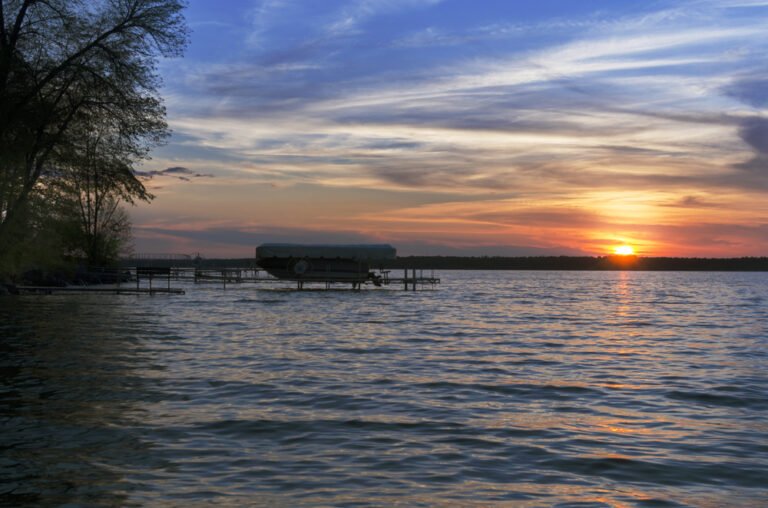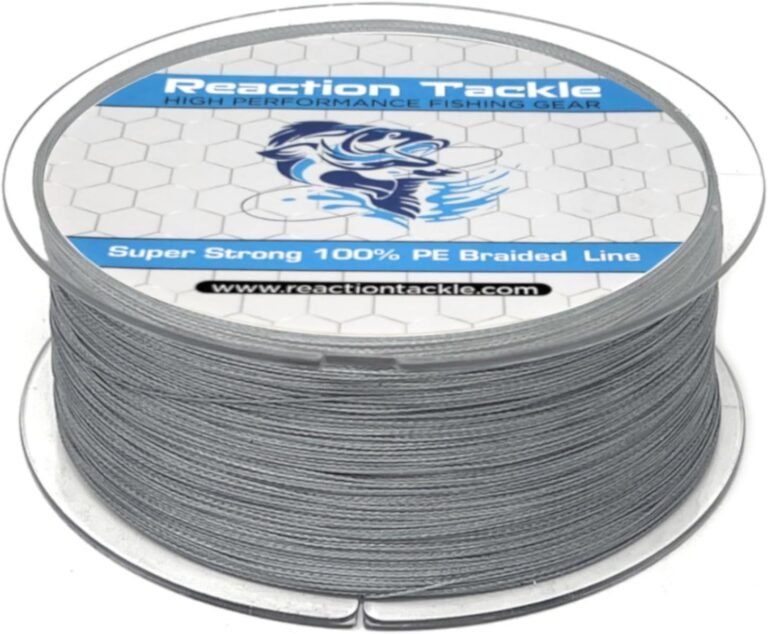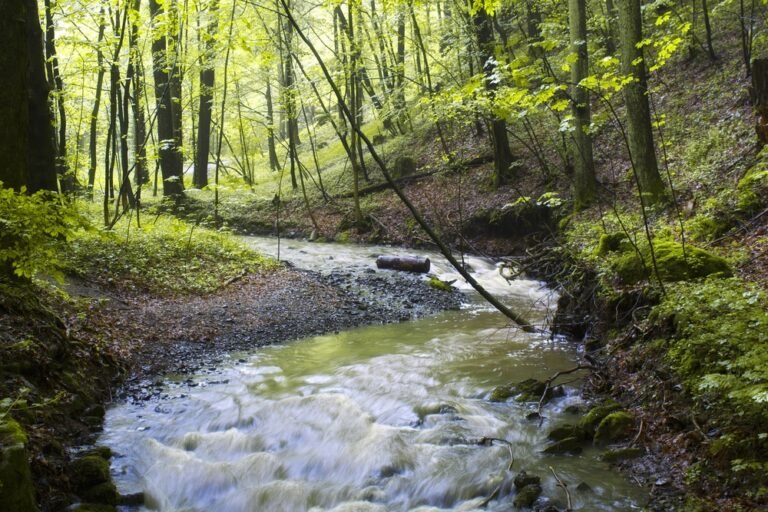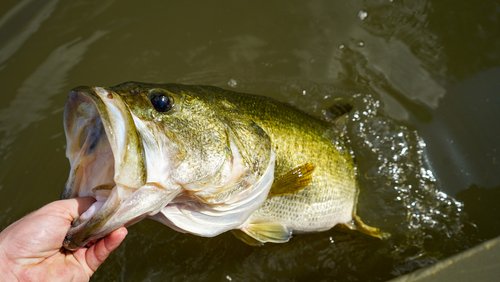As summer fades away and fall takes its colorful reign, bass undergo notable behavioral changes. Understanding these transitions is crucial for a successful fall bass fishing expedition. During the early fall, you’ll notice bass moving from their deep summer haunts towards shallower waters.
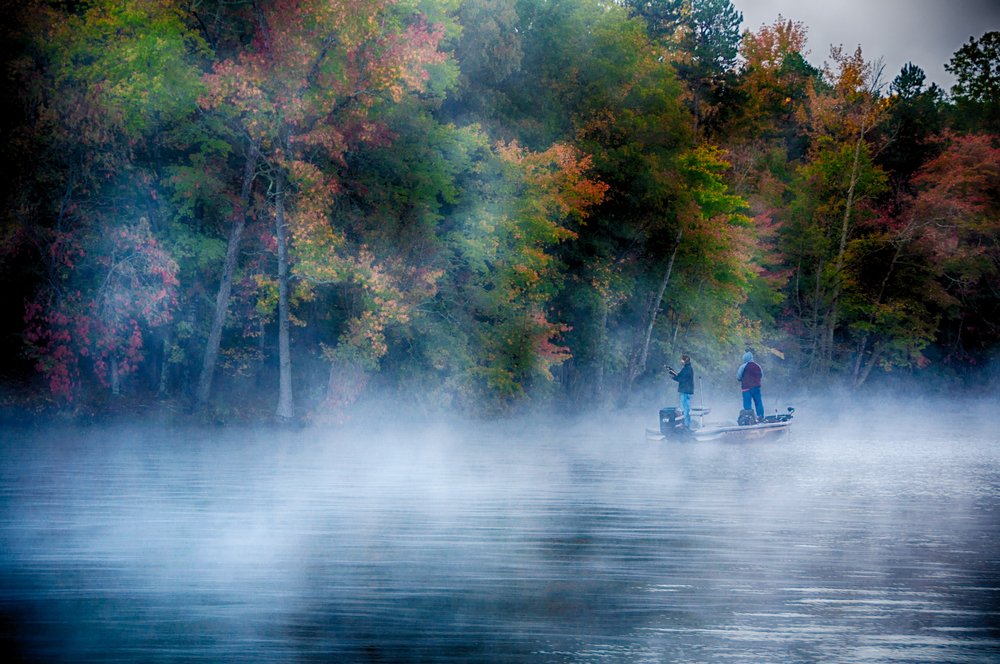
With the cooling temperatures and decreasing daylight hours, bass instinctively begin preparing for the upcoming winter by feeding aggressively to store energy. This period offers a unique window of opportunity for anglers to target actively feeding bass.
Factors Influencing Bass Movement and Feeding Habits
Several factors influence how and where bass move during the fall season. One key factor is water temperature fluctuations. As temperatures drop, bass migrate towards areas with more stable temperatures, such as shallower areas with cover or deeper water with consistent thermal conditions.
Additionally, changes in baitfish behavior play a significant role in dictating the movement patterns of bass. As schools of baitfish migrate towards shorelines or transition into shallow vegetation, predatory species like bass follow suit, capitalizing on this abundance of food.
Furthermore, weather conditions can greatly impact bass behavior in the fall. A sudden cold front can trigger a temporary slowdown in feeding activity as fish adjust to the abrupt change in conditions.
Similarly, windy days can create localized concentrations of baitfish by pushing them into certain areas like windblown points or pockets along shorelines – prime locations for luring hungry fall bass. Understanding how bass behavior evolves from summer to fall is crucial for successful fishing outings during this season.
By recognizing their movement patterns and knowing which factors influence their feeding habits, anglers can strategically target actively feeding fish and increase their chances of landing that trophy-sized catch. So grab your best baits for fall bass fishing and get ready to employ effective techniques tailored to the fall season, ensuring an exhilarating experience on the water.
Best Locations for Fall Bass Fishing
Exploring Shallow Water Habitats: Weed Beds, Fallen Trees, and Docks
When it comes to fall bass fishing, exploring shallow water habitats can be incredibly rewarding. As the water temperature cools, the bass starts moving toward the shallows for food before winter sets in. This is especially true during the early fall bass fishing period.
One prime location to target is weed beds. These are often hotspots for baitfish activity, making them an irresistible buffet for hungry bass.
Look for areas with dense vegetation, such as hydrilla or milfoil. Using lures like buzz baits or topwater frogs can effectively entice strikes from aggressive bass lurking beneath the thick cover.
Another excellent spot to explore is fallen trees and submerged timber. Bass love seeking refuge amongst these natural structures, using them as ambush points to prey on unsuspecting baitfish.
Cast your favorite fall bass fishing lures around these woody havens, like crankbaits or jigs, allowing your presentation to mimic a wounded baitfish seeking shelter. Don’t overlook docks, either!
Docks provide shade and cover for fish and their prey during the warmer months but can continue to hold fish well into the fall season. Pitching soft plastics such as worms or creature baits under docks can yield fantastic results as it imitate a natural food source while being less intrusive than other presentations.
Deepwater Structures: Ledges, Drop-offs, and Points
As autumn progresses and temperatures drop, bass tend to transition from shallow water towards deeper structures where they find more stable conditions and ample feeding opportunities. Deepwater structures like ledges, drop-offs, and points become key focal points during late fall bass fishing. Ledges are underwater cliffs that slope gradually into deeper waters.
They act as major highways for bass, providing access to shallow and deep areas. By using fall bass fishing lures such as crankbaits or spinnerbaits, you can quickly cover large areas of the ledge and entice active fish reaction strikes.
Drop-offs are abrupt changes in depth, often found near points or along the edges of underwater channels. These areas offer an ideal hunting ground for bass as they can easily move up and down in search of prey.
Target drop-offs with jigs or Texas-rigged soft plastics, allowing your bait to fall into deeper waters where lurking bass await their next meal. Points are underwater extensions that jut out into a lake or river.
They create natural bottlenecks for passing baitfish, making them a prime location for predatory bass. Crankbaits and jerk baits are fantastic fall bass fishing lures around points as they mimic fleeing baitfish and trigger aggressive strikes.
Exploring these shallow-water habitats and deepwater structures increases your chances of landing trophy-sized bass during the fall season. Remember to adapt your tactics based on the changing conditions and experiment with different fall bass fishing lures to find what works best in each location.
Rods and Reels for Different Fishing Techniques

Choosing the Right Rod
When it comes to fall bass fishing, selecting the appropriate rod can greatly enhance your chances of success. For versatile performance, a medium-heavy to heavy-action rod is ideal. This will provide enough strength to handle larger bass while maintaining sensitivity for detecting subtle nibbles.
Additionally, consider the length of the rod. A 6’6″ to 7’0″ rod balances casting distance and maneuverability, allowing you to cover various fishing scenarios.
Picking the Perfect Reel
Pairing your chosen rod with the perfect reel is equally important. A baitcasting reel is highly recommended for fall bass fishing due to its superior accuracy and control during casting and retrieving. Look for a reel with a high gear ratio (7:1 or higher), as it allows for quick line retrieval when needed, especially if you use fast-moving lures like crankbaits or spinnerbaits.
Crankbaits, Jigs, Spinnerbaits, and Soft Plastics
Crankbaits: Versatile All-Season Lures
Crankbaits are absolute go-to lures for fall bass fishing enthusiasts. They imitate injured baitfish, making them irresistible to hungry bass in shallow and deep water scenarios.
Opt for medium-depth diving crankbaits that mimic the movements of shad or other baitfish species prevalent during this season. Colors like chartreuse, shad patterns, or natural hues effectively entice strikes.
Jigs: Flipping and Pitching Techniques
Jig fishing attracts sluggish late-fall bass when their metabolism slows down due to colder water temperatures. A well-placed jig can entice even the most finicky bass into biting. For fall bass fishing, choose jigs with a medium to heavy weight, preferably around 1/4 to 1/2 ounce, allowing you to penetrate cover and reach deeper water effectively.
Pair your jig with a trailer that matches local forage, such as crawfish or baitfish colors. Experiment with different retrieval speeds and subtle rod twitches to trigger strikes.
Soft Plastics: Finesse Tactics
Soft plastics are highly versatile and effective in tempting early fall bass when they are still actively feeding. Worms and creature bait in natural hues like green pumpkin or watermelon red often yield positive results.
Texas rigs or Carolina rigs paired with weighted bullet-style sinkers provide ideal presentations for enticing bites from wary bass hiding in cover. Opt for drop shot rigs with finesse worms or small creature baits rigged on a long shank hook for maximum effectiveness when fishing deeper structures.
You’ll be well-prepared for successful fall bass fishing adventures by equipping yourself with the right gear and tackle, including a suitable rod and reel combination and must-have lures such as crankbaits, jigs, spinnerbaits, and soft plastics. Adjust your techniques based on the specific conditions during late fall or early fall bass fishing excursions to increase your chances of landing that trophy-worthy catch!
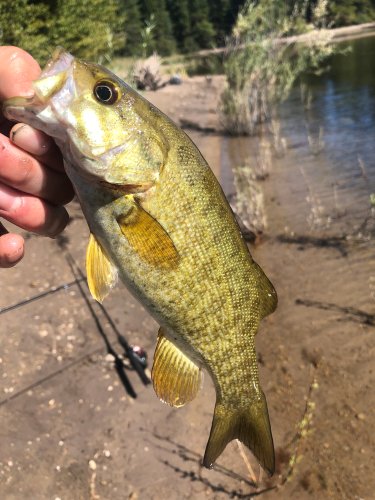
Techniques for Catching Fall Bass
Crankbait Fishing: Diving Depths and Retrieving Speeds
Regarding fall bass fishing, crankbaits are a go-to lure for many anglers. These versatile lures mimic baitfish, making them irresistible to hungry bass.
Understanding their diving depths and retrieving speeds is crucial to using crankbaits effectively. Different crankbaits have varying diving depths designed to reach specific zones in the water column.
For shallow water conditions, opt for square-billed crankbaits that dive between 2-5 feet. If you’re targeting deeper areas, consider deep-diving crankbaits that plunge to depths of 10-20 feet or more.
Choosing the Right Crankbait Based on Water Clarity & Temp
Water clarity and temperature greatly influence bass behavior and their preferred prey. Choose natural-colored crankbaits such as shad or crawfish imitations in clear water during the fall season. On the other hand, if the water is stained or murky due to heavy rainfall, opt for brighter colors like chartreuse or fire tiger that can attract attention even in low visibility situations.
Additionally, please pay attention to water temperature as it affects the metabolism levels of both bass and baitfish. In warmer waters early in the fall season, use faster-retrieving crankbaits to aggressively match the increased bass-feeding activity before winter.
Tips for Effectively Working Crankbaits Through Cover
Crankbaits are exceptionally effective when worked through cover where bass seek refuge from changing weather conditions. When encountering submerged vegetation like weed beds or fallen trees, use a stop-and-go retrieve technique while keeping your lure above the tops of weeds or bouncing it off submerged structures like stumps or branches.
This imitates an injured baitfish, triggering a bass’s predatory instinct. Remember to vary your retrieve speed and experiment with different pauses to find the presentation that entices strikes from the bass lurking in the cover.
Jig Fishing: Flipping and Pitching Techniques
Another reliable technique for fall bass fishing is jig fishing. Jigs excel in imitating crawfish, a staple prey item for bass during this season. When targeting bass around structure, flipping and pitching techniques are ideal for precise presentations.
Selecting the Appropriate Jig Weight and Trailer Combination
Choosing the right jig weight is crucial to match the depth and conditions you’re fishing in. In shallower water or when flipping close to cover, opt for lighter jigs (1/4 to 3/8 ounce) to ensure a slow descent that mimics a crawfish crawling along the bottom. In deeper waters or when targeting suspended fish, heavier jigs (1/2 to 1 ounce) will allow you to reach the desired depths effectively.
Pair your jig with an enticing trailer like a creature bait or soft plastic crawfish imitation. The best baits for fall bass fishing often resemble natural prey items in the water during this time of year.
Approaching Structure with Precision to Entice Strikes
When using flipping or pitching techniques with jigs, accuracy is key. Approach potential holding areas such as laydowns, docks, or submerged vegetation quietly so as not to spook any nearby fish.
Make short underhand casts towards specific targets and aim for pinpoint accuracy rather than casting long distances. This method presents your jig vertically near the structure where bass often waits in ambush mode.
Soft Plastic Presentations: Finesse Tactics
Soft plastic baits are known for their versatility and effectiveness throughout the year, but they can be particularly productive during fall bass fishing when finesse presentations are required.
Choosing the Right Soft Plastic Baits
When selecting soft plastic baits for fall bass fishing, options like worms and creature baits are highly recommended. Stick to natural colors such as green pumpkin, watermelon, or black since they closely mimic the forage bass feed on during this season. Consider using baits with added scent or attractant to entice strikes further.
Rigging Options
Two popular rigging options for soft plastics in fall bass fishing are the Texas rig and the Carolina rig. The Texas rig is versatile and weedless, making it great for fishing through cover. It involves threading a bullet weight onto the line above a hook and then embedding the hook into the bait.
The Carolina rig is ideal for covering more open areas where bass may roam for prey. It consists of a sliding weight that allows the bait to move more freely while maintaining contact with the bottom.
Mastering these techniques and understanding which lures work best in different situations will greatly increase your chances of success during fall bass fishing adventures. Remember to experiment with retrieve speeds, adapt to changing conditions, and always watch seasonal baitfish movements—it’s all part of becoming a skilled angler capable of reeling in those prized fall bass!
Tips for Success in Fall Bass Fishing
Monitoring Water Temperature Changes
Submerged in the depths of your favorite fishing spot, an intricate dance occurs between the bass and the changing water temperature during the fall season. Keep a close eye on this crucial factor, as it greatly influences bass behavior and feeding patterns. Invest in a quality thermometer to measure the water temperature accurately as you venture out on your fall bass fishing excursions.
Start by monitoring the surface temperature, which often gives a good indication of what’s happening below. Keep notes of these observations to identify trends and patterns over time.
When it comes to water temperature changes, knowledge is power. In early fall, as temperatures gradually drop from summer highs, bass tend to become more active and move toward shallower waters where they can find warmer pockets of water.
However, as temperatures decline into late fall, bass become less active and begin transitioning toward deeper areas. You can adjust your fishing strategies by keeping track of these fluctuations.
Adapting to Weather Conditions (Windy Days or Cold Fronts)
Ah, weather – that unpredictable force capable of tossing our plans aside like a discarded fishing line! Windy days are common during autumn, but fear not; they can work in your favor regarding fall bass fishing.
Strong winds create ripples and waves on the surface, providing better camouflage for anglers and disrupting visibility for bass lurking beneath. Take advantage of this by using noisy topwater lures or spinnerbaits that create vibrations and commotion in choppy waters, enticing curious bass into striking.
On the other hand, sudden cold fronts can significantly impact fish behavior in autumn. A drastic drop in air temperature often puts fish into a temporary shock or lethargy, causing them to retreat to deeper, more stable waters.
If you are faced with a sudden cold front, consider slowing your retrieval speed and opting for finesse techniques such as Texas-rigged soft plastics or slow-rolling spinnerbaits. These subtle presentations can be more enticing to sluggish bass and increase your chances of success.
Observing Seasonal Baitfish Movements
In the intricate ecosystem of fall bass fishing, baitfish play a vital role. As temperatures cool, schools of baitfish start their migration towards shallower areas in search of food and protection. Observing their movements can provide valuable insights into where the predatory bass might be hiding.
Look for signs such as splashing water or diving birds indicating feeding frenzies caused by bass ambushing baitfish. When targeting fall bass, it’s essential to match your lure selection to the available baitfish species in your area.
Popular choices include shad-imitating crankbaits or swimbaits and smaller jerk baits that mimic injured minnows. By closely observing these seasonal movements and adjusting your lure choice, you’ll increase your chances of enticing a strike from hungry fall bass.
Remember: monitoring water temperature changes, adapting to weather conditions, and observing seasonal baitfish movements are fundamental aspects of successful fall bass fishing. Use these tips wisely alongside other fall bass fishing techniques and best baits for maximum effectiveness on the water.

Conservation Practices in Fall Bass Fishing
Preserving the Resource: Ethical Angling
As passionate anglers, we must catch bass, protect their habitat, and ensure long-term survival. Adopting ethical angling practices is crucial, especially during fall bass fishing when these fish prepare for the colder months ahead. One important conservation practice is to handle the bass with care.
Avoid putting unnecessary stress on them by using proper landing techniques and wetting your hands before touching them. Additionally, minimize the time spent out of the water by quickly releasing the fish after capturing that memorable photo.
Implementing Catch and Release Strategies
Catch and release practices can greatly contribute to sustaining healthy bass populations. While it’s exhilarating to feel the fight of a big bass, consider releasing it back into the water to maintain a balanced ecosystem.
Many anglers practice selective harvest, only keeping smaller or surplus fish for consumption while releasing larger ones to promote breeding and natural growth. Doing so ensures that future generations can experience the thrill of catching their trophy-sized bass.
Protecting Fish Habitats
Preserving fish habitats is vital for fall bass fishing success and maintaining ecological balance. When exploring shallow water areas with weed beds or fallen trees, avoid disturbing these critical environments where bass seek shelter and feed.
Avoid damaging vegetation or stirring up sediment, affecting water quality and clarity. Additionally, when navigating with boats or kayaks near docks or deepwater structures like ledges and points, be cautious not to disrupt potential spawning grounds or disturb other wildlife sharing those habitats.
Conclusion
Fall bass fishing offers a thrilling opportunity for anglers while also carrying important responsibilities toward conservation efforts. By adhering to ethical angling practices, implementing catch and release strategies, and protecting fish habitats, we can ensure the sustainability of bass populations for years to come. Remember that our actions as anglers directly impact the overall health of ecosystems.
So, as you venture out with your best fall bass fishing lures and employ various fall bass fishing techniques, remember the importance of conservation. Let us leave a positive mark on nature’s playground, fostering a future where every angler can experience the joy of catching these magnificent fish.

